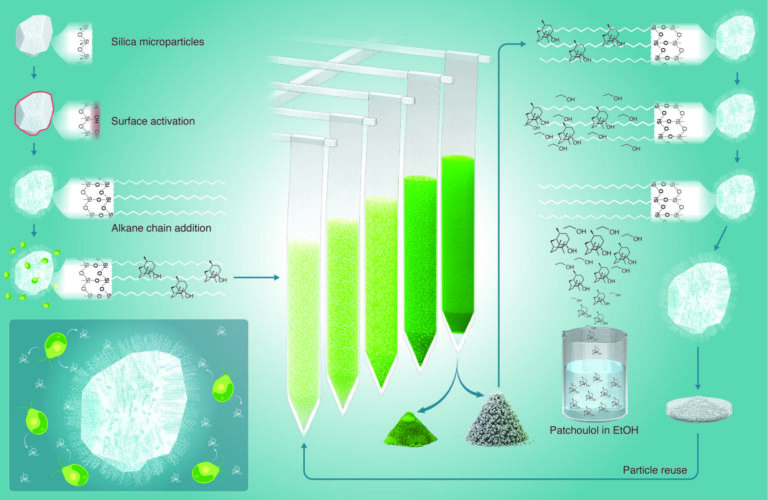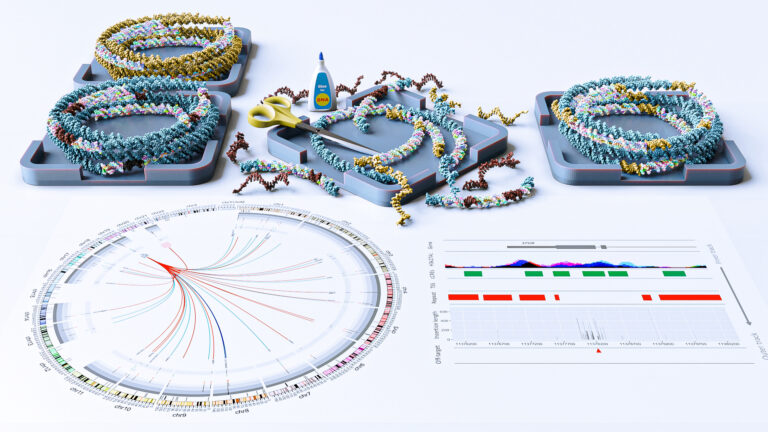Bioscience
Enzymatic danse macabre of lung cancer
A mutational change of an enzyme’s dynamics increases its activity on a chromatin histone, ultimately causing a common lung cancer.

KAUST researchers used nuclear magnetic resonance spectroscopy to experimentally evaluate the structure and dynamics of the hyperactive mutant enzyme implicated in driving lung squamous cell carcinoma. © 2021 KAUST; Anastasia Serin. /en/article/1099/enzymatic-danse-macabre-of-lung-cancer
KAUST researchers used nuclear magnetic resonance spectroscopy to experimentally evaluate the structure and dynamics of the hyperactive mutant enzyme implicated in driving lung squamous cell carcinoma. © 2021 KAUST; Anastasia Serin. /en/article/1099/enzymatic-danse-macabre-of-lung-cancer
A chromatin-regulating enzyme has been shown by in-depth interdisciplinary investigations to be a key driver of a common type of lung cancer. Drugs that target the enzyme could improve treatment and survival rates for this particular cancer.
“Squamous cell carcinoma represents nearly one third of all lung cancers in humans,” says KAUST structural biologist Lukasz Jaremko, who led the research along with colleagues at Stanford University and The University of Texas MD Anderson Cancer Center, U.S. “Our joint structural and dynamics investigations, including enzymatic activity studies, genetic analyses, and mouse model and human cell results, all point to the enzyme histone-lysine N-methyltransferase (NSD3) as a main driver of cancer,” he says.
As part of the investigations, Ph.D. student Vladlena Kharchenko, a member of Jaremko’s lab, used nuclear magnetic resonance spectroscopy to experimentally evaluate the structure and dynamics of both normal NSD3 and the hyperactive mutant implicated in driving lung squamous cell carcinoma.

The study by Vladlena Kharchenko and Lukasz Jaremko shows that there is more to understand about NSD3 function at the atomic level before a potent NSD3-specific therapy can be developed.
© 2021 KAUST; Anastasia Serin.
“The mutation did not appear to affect the static structure of the enzyme,” Kharchenko says. “However, using the dynamic nuclear Overhauser effect, we were able to show that the hyperactive mutation led to mobility changes in part of the NSD3 enzyme, enabling it to more easily catalyze the addition of two methyl molecules to a histone tail in chromatin,” she explains. “This ultimately deregulates cancer-promoting genes in some forms of lung cancer.”
Scientists have long been aware that many genes within a specific region on chromosome 8 are potentially involved in cancer formation. One gene in particular, FGFR1, has received much attention as a potential driver of lung cancer. But clinical trials inhibiting the protein coded by this gene have been disappointing.
“Our studies explain the molecular foundations of NSD3 enzymatic hyperactivity, its danse macabre, and unequivocally confirm that NSD3, not the previously suspected FGFR1, is the main driver of squamous cell carcinoma of the lung,” says Jaremko.
The collaborative investigations also found that NSD3 was susceptible to a category of anticancer drugs called bromodomain inhibitors. But inhibitors that specifically target NSD3 are still needed, making it a prominent target for drug screening campaigns.
The team wants to improve its molecular-level understanding of the function of NSD3 in chromatin and cells. “Our study reveals that the molecular dynamics aspects of cancer research are complex and fascinating,” says Kharchenko. “It also shows there is more to understand about NSD3 function at the atomic level before we can develop a potent NSD3-specific therapy.”
References
- Yuan, G., Flores, N.M., Hausmann, S., Lofgren, S.M., Kharchenko, V., Angulo-Ibanez, M., Dengupta, D., Lu, X., Czaban, I., Azhibek, D., Vicent, S., Fischle, W., Jaremko, M., Fang, B., Wistuba, I.I., Chua, K. Roth, J.A., Minna, J.D., Shao, N-Y., Jaremko, L., Mazur, P.K. & Gozani, O. Elevated NSD3 histone methylation activity drives squamous cell lung cancer. Nature 590, 504–508 (2021).| article
You might also like

Bioengineering
High value harvests from designer algae

Bioscience
Digging into the world of plant-growth-promoting microbes

Bioengineering
Stray DNA fragments challenge CRISPR precision

Bioscience
Unique microbiome discovered in mountain streams

Bioscience
How a multitasking protein keeps the body’s clock in sync

Bioscience
The theory of everything that wasn’t

Bioscience
Mangrove microbes to munch on plastic

Bioscience




